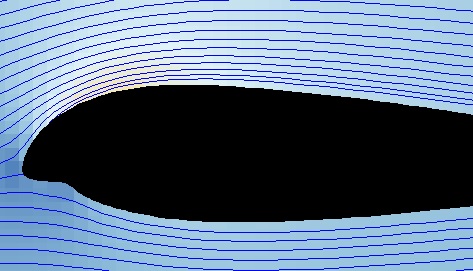The sharknose airfoil and its particular leading edge…
What is the Sharknose? What are its effects?
Watch out ! The sharknose is a specific foil shape for paragliders. It is not only about using plastic batterns on the leading edge…
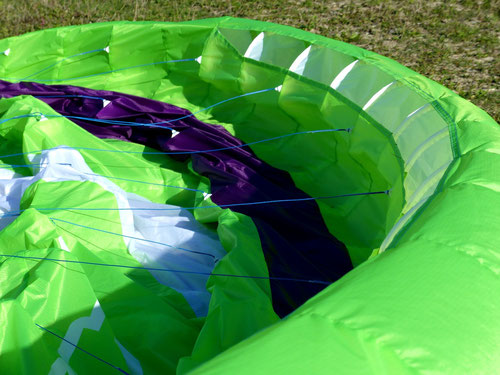
Aeros snowkite canopy, there are plastic batterns but no sharknose yet!
The Sharknose is a patented airfoil that contains a concave leading edge. It was published in 2011 by Ozone famous Paragliding brand. First things first, let’s see why it came out.
THE IMPORTANCE OF THE LEADING EDGE
The leading edge is a critical part for a wing, that will be crucial for its overall performances (glide ratio). And it also contains the air inlet, which size must be wisely chosen to ensure a sufficient internal pressure. The internal pressure is determined by the angle of attack of the canopy and the shape and position of the inlet.
INTERNAL PRESSURE : ITS IMPORTANCE
Bear in mind that the wings holds its shape when the internal static pressure is higher that the external static pressure. However, the opposite may happen locally on the canopy creating a force from the outside of the cloth toward the inside, creating deformations, which deteriorate the glide ratio.
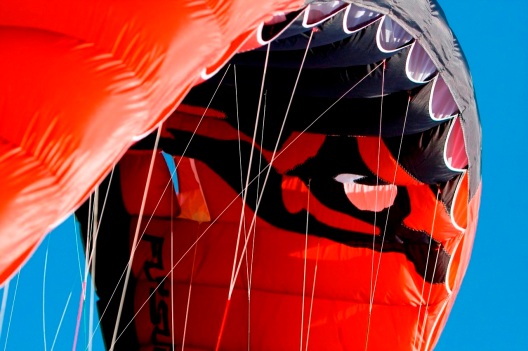
Local deformations of the cloth can be seen…
But in extreme cases, the internal pressure can be on the whole lower than the external static pressure. It is something that acro pilots know well, it happens during deep stall, front stall, full stall, …
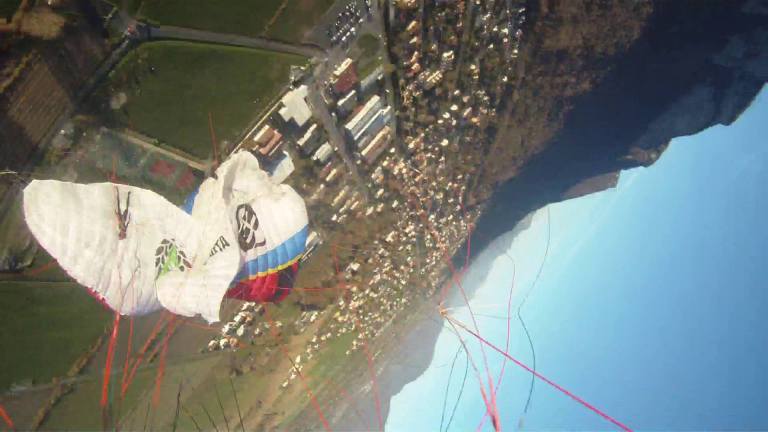
To conclude, you do want to have the higher internal pressure possible. It is done by maintaining a high pressure in front of the air inlet, as the internal pressure is roughly the mean of the local pressures in front of the opening.
AERODYNAMICS
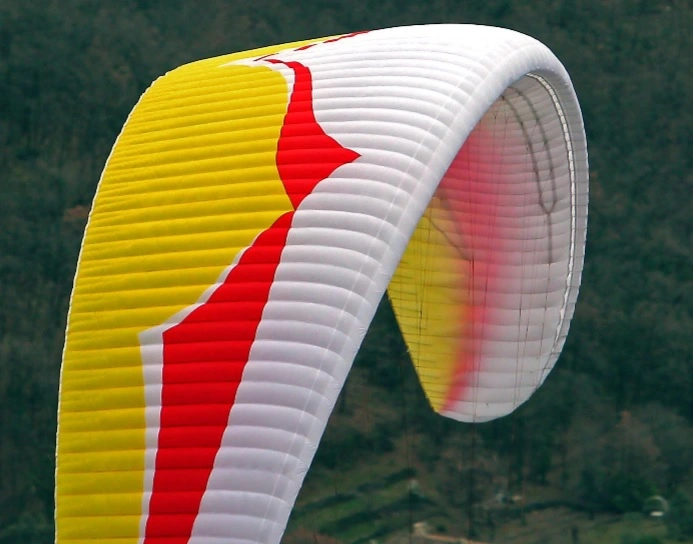
basically the sharknose will maintain a higher pressure in front of the air inlet. Here are perfect fluid simulations done with Xfoil (Xflr5) and Javafoil (www.mh-aerotools.de), first, with a standard airfoil :
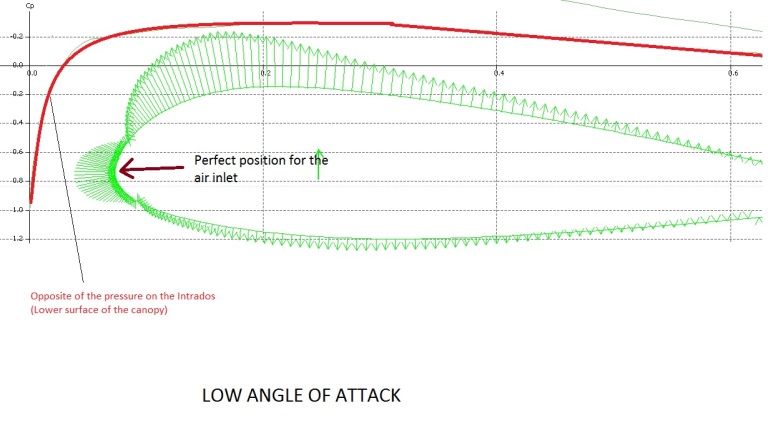
it can be inferred from these results that at a low angle of attack the highest pressure is located on the front part of the leading edge, therefore it is where the inlet should be to ensure a proper internal pressure.
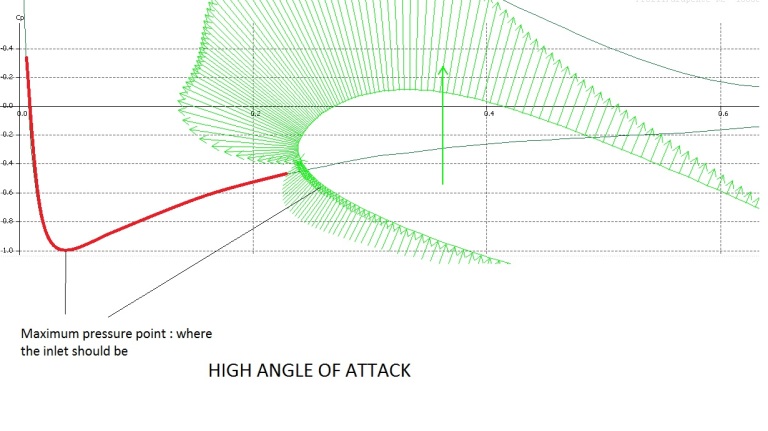
With an higher AoA (angle of attack or angle of incidence) the inlet should be located further on the intrados. Because the inlet can’t move, manufacturers have to compromise : the inlet has to be large, and located between those two points. But the internal pressure for sure won’t be optimal.
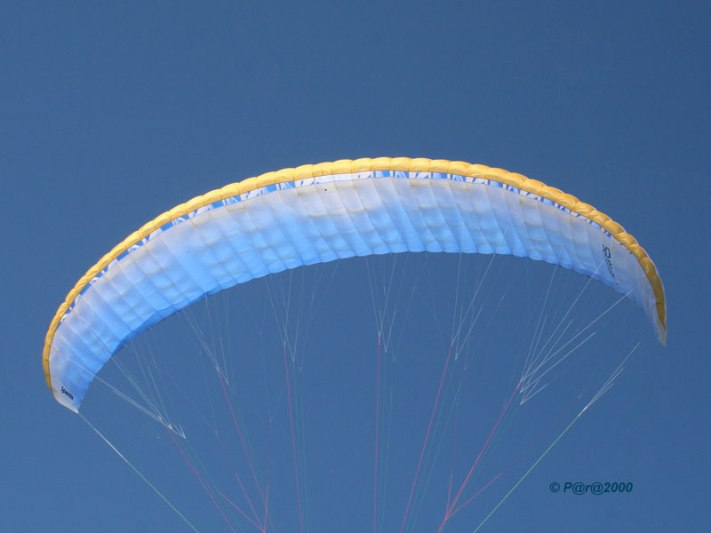
The air inlet… it’s all about compromise!
THE IDEA OF THE SHARKNOSE
The magic of the sharknose is that it creates a kind of “false, smaller leading edge”, reducing the consequences of the variations of the AoA. Therefore, the internal pressure can be optimized at extreme AoAs even with really thin intakes.
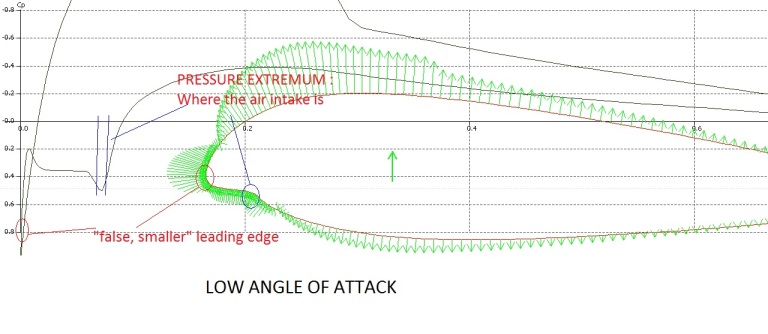
Here, at low angle of attack there is a pressure extremum at the top of the concavity, it is where the air intake is. The great advantage is that the same extremum can be found at any AoA, consequently, no compromise has to be done for the choice of the position of the air intake.
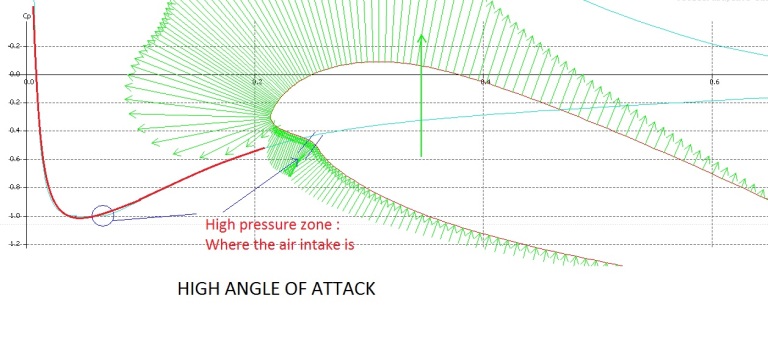
THE NEED FOR RIGID REINFORCEMENTS
It can be seen from the simulation results that the pressure at the air intake is not at CP=1. the CP or Pressure Coefficient represents the ratio between the local pressure and the dynamic pressure 1/2 *rho*V² . Indeed, the maximal pressure is at CP=1 and minimal is for CP=0.
At higher AoAs the intake is at CP=1 so there will be no particular problem.
At low AoAs there is a CP lower than 0.5, then to avoid deformations (where the internal pressure is lower than the extrenal pressure, creating a “shrinking” force) manufacturers have to put rigid batterns on the leading edge:
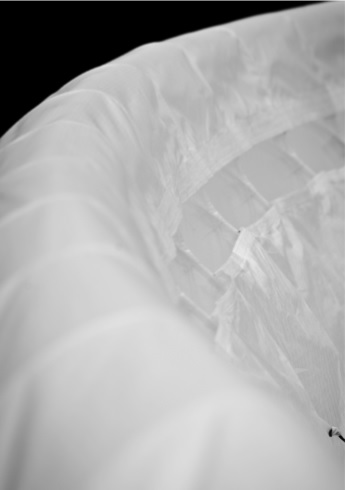
The combination of a Sharknose with a rigid leading edge allows the paraglider pilot to fly with angle of attacks significantly lower than with standard wings… What does it mean? More speed of course! Now competition class paragliders can reach 70km/h easily ! Since 2011 many distance records have been beaten thanks to this technology.
AND WHAT ABOUT THE GLIDE RATIO ?
Because of it’s particular shape, the sharknose does not reduce drag nor increase lift. You would not see this type of airfoil on an Airplane!
Nevertheless, with an higher internal pressure, and a thinner air intake, the profile is more accurately respected. Indeed the glide ratio might have been increased. But yet no rigorous study has been led to prove it.
IS IT FOR ME?
I think the sharknose is the perfect airfoil for performance! Increased top speed and glide ratio, performances at low speeds…
I remain a little skeptical concerning its use for EN-B or even EN-A wing, where, in my opinion, there should be no compromise on safety. Because high internal pressure and high speed will mean a canopy that is more reactive and precise and also more demanding for advanced piloting skills. However since I have no extensive flight experience on sharknose canopy my opinion might change soon!

The triple seven PAWN. A paraglider for beginners with a sharknose !
QUESTIONS?
If you have any questions concerning aerodynamics just ask me and I will see if I am able to provide an answer.

